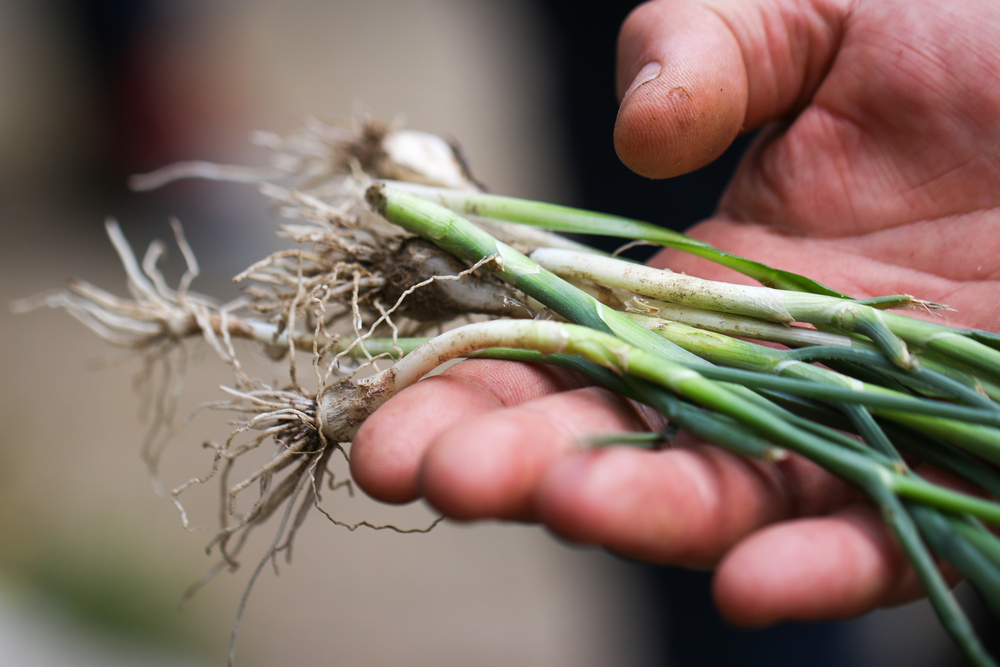Last Updated on October 5, 2022 by admin_hunter
When the world ends, you’ll want to be prepared. That’s why I’ve put together this list of easy-to-grow edibles that you can use to feed yourself and your family in times of need.
Wild Onions
Wild onions are a delicious and nutritious food. They’re easy to find, too! You can find wild onions in your own backyard or neighborhood—they’re everywhere. The best part is that they taste like regular onions (and sometimes even better).
Wild onion plants grow throughout the eastern United States and Canada, but especially in areas with lots of rain and humidity. If you live near the coast or on an island, chances are good that there will be wild onion plants nearby; this makes them an excellent choice for survival foods because they can last for many months without needing refrigeration during winter months when temperatures drop below freezing point outside
Wild Garlic
Wild garlic, which can be found in the wild or planted by hand, is a native plant that grows in spring and summer. It has a strong garlic flavor and an essential oil content of up to 12%. Wild garlic has many medicinal uses: it’s anti-inflammatory, anti-fungal and antiseptic. The leaves can also be eaten raw or cooked like other greens—a great addition to soups!
Dandelions
Dandelions are a great source of nutrition, and they’re also edible. You can use them to make salads or soups, or just eat them raw like you would any other green leafy vegetable. They have minimal calories and won’t leave you feeling heavy after eating them!
Kudzu
Kudzu is a perennial vine that grows in the United States. It’s a great source of food, and can be used to help you survive if you are forced to live off the land. Kudzu has been used as food for thousands of years, but it wasn’t until recently that scientists realized just how nutritious this plant really was.
Kudzu contains lots of vitamins A, C and B as well as iron (which helps with your blood) plus calcium (to build strong bones), potassium (to keep your cells healthy), magnesium (for relaxation) copper sulfate which helps fight infection so you’ll feel better fast!
Purslane
Purslane is a succulent plant that grows in the wild. It’s also known as pigweed, and it can be eaten raw or cooked. You can use it in salads and sandwiches as well as salsas and pestos. Purslane has a sour taste, which makes it delicious when added to salads or marinades for fish or chicken!
Purslane contains high levels of omega 3 fatty acids (which are good for your skin), protein, calcium, iron and magnesium—all nutrients necessary for survival food production!
White Clover
White clover (Trifolium repens) is a legume, which means it has seeds that are similar to beans. It’s also a perennial, meaning it will live for several years and come back year after year. This makes white clover an ideal plant for survival foods because you can collect its seeds from the ground or use those fresh seeds to grow new plants later on.
White clover is known as a nitrogen fixer because it produces bacteria that convert nitrogen into usable organic fertilizer in soil when growing next to other crops like corn or potatoes. The best part? You can use this plant as raw material in your own homemade compost pile!
If you’re looking for ways to keep yourself fed while out on your next adventure—whether it’s trying not just survive but thrive under extreme conditions—white clover might be just what you need:
Chickweed
Chickweed is a great choice because it grows in almost any soil, but it’s especially useful in areas with poor soil. Chickweed can be used as an edible or medicinal plant. The leaves and stems look similar to spinach or parsley, so they can be used like them too! Just make sure you wash them thoroughly before cooking as they have a milky sap that may cause irritation if eaten raw or cooked with other foods (like potatoes).
The most common name for chickweed is “sorrel”, although there are many different species of this herb around the world. These plants grow all over the world from Europe down into South America; however, only one species grows here on our continent: Rumex crispus (“chickweed”).
Takeaway
Wild garlic, dandelion leaves and root tips, kudzu (a vine native to Asia), purslane (a vegetable that grows wild in many parts of the world) are all great sources of vitamin A and C.
Because these plants are so hardy—and easy to grow—they can be used as survival foods year-round.
Conclusion
The plants listed above are all great options for survival foods. They’re easy to grow and they can be found anywhere in the world, making them an excellent option if you need some emergency food storage. You can also use these plants as part of a garden in your yard or neighborhood and share what you grow with friends, family members, or other people in need.

